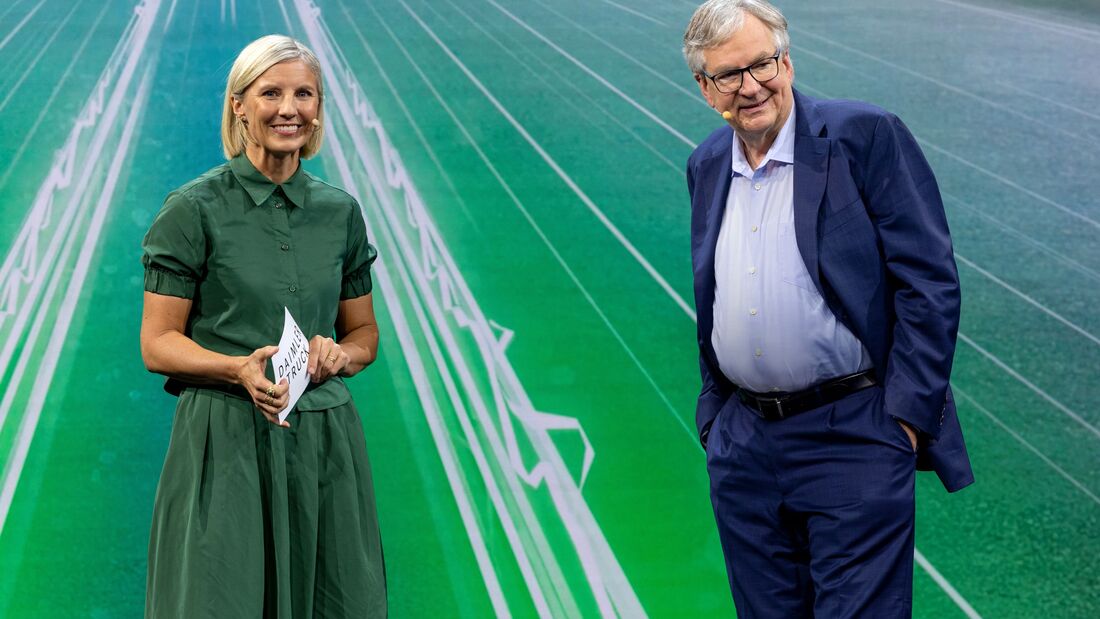At the end of November, the eActros 600 officially rolls off the assembly line at the truck plant in Wörth am Rhein. In parallel and flexibly alongside the diesel trucks, the battery-electric long-haul models are starting the new drive era. Initially a small seedling alongside the established diesel models, but already blessed with advance praise.
Over 2,000 firm orders have already been received for the eActros 600. The manufacturer promises 500 kilometers without intermediate charging. Thanks to the pre-equipment for megawatt charging (MCS), there should later be enough power to charge the batteries from 20 to 80 percent in around half an hour with around one megawatt of power. Until then, the CCS standard will provide 400 kW of energy. The basis for this: the 621 kWh LFP battery packs, which are installed at right angles to the direction of travel at the bottom of the vehicle frame. There is space for them because Daimler Truck is switching to the e-axle layout with the eActros 600 instead of sticking with the usual central drive with cardan shaft. The e-axle of the eActros 600 was developed in-house and has a continuous output of 400 kW / 544 hp with two electric motors. Its power is transmitted to the wheels via a four-speed gearbox that is also integrated into the axle.
Daimler Truck proved that the e-axle performs its work reliably with the European Testing Tour: Over the summer, two eActros 600s embarked on a European tour. The semitrailers, which are said to have a payload of around 22 tons with a standard trailer, were loaded to around 40 tons. Each truck covered over 15,000 kilometers, with electricity being topped up at public charging stations alone. The consumption of the test vehicle on the tour leveled off at 103 kWh per 100 kilometers, with ranges of over 600 kilometers possible without intermediate charging for some of the daily stages. On average, around 25 percent of the drive consumption was covered by recuperated energy, i.e. energy recovered during coasting and braking.
“We presented our vision for the sustainable transportation of the future years ago. The IAA TRANSPORTATION 2024 is now clearly all about implementation for us.We are supplying battery-electric series vehicles in the quantities that our customers demand,” explained outgoing Daimler Truck CEO Martin Daum. His designated successor and current head of Mercedes-Benz Trucks, Karin Rådström, added: “Our eActros 600 is a strong alternative to a diesel truck - thanks to its range of 500 kilometers on a single battery charge.With its very high energy efficiency, the eActros 600 will also be profitable for fleet operators. It is now essential that politicians, the energy sector and industry work together to drive forward the expansion of the public charging infrastructure.” Chief Technology Officer Andreas Gorbach focused on digitalization.
Daimler trucks process data much faster
The latest Daimler trucks already process data up to 20 times faster than before. However, in order to exploit the full potential of software in the future and achieve a possible quantum leap, it is necessary to reduce the number of decentralized control units with different operating systems and to redefine the mechatronics architecture.“The future of the truck is emission-free and based on software,” explained Gorbach.With a lean software architecture and associated operating system, it should be possible for the truck to recognize and react to dangers long before humans do.It could also automatically transmit freight and order documents or reserve a parking space including a charging station.It is also conceivable that drivers could virtually reach their dining table at home during rest periods, even if they are physically in the truck.To increase efficiency, the computing power could also be used to check topography, traffic or electricity and hydrogen prices in real time and automatically draw the right conclusions.
Daimler Truck intends to put this vision into practice in a joint venture with the Volvo Group.The joint venture is to procure suitable computers and develop the operating system itself, on the basis of which customer applications could in turn be developed.Daimler Truck and the Volvo Group want to use these trucks to decouple software and hardware development cycles from each other and thus enable the further installation and updating of digital services “over the air” even after the trucks have been purchased.
Hall 19/20, Stand A73






